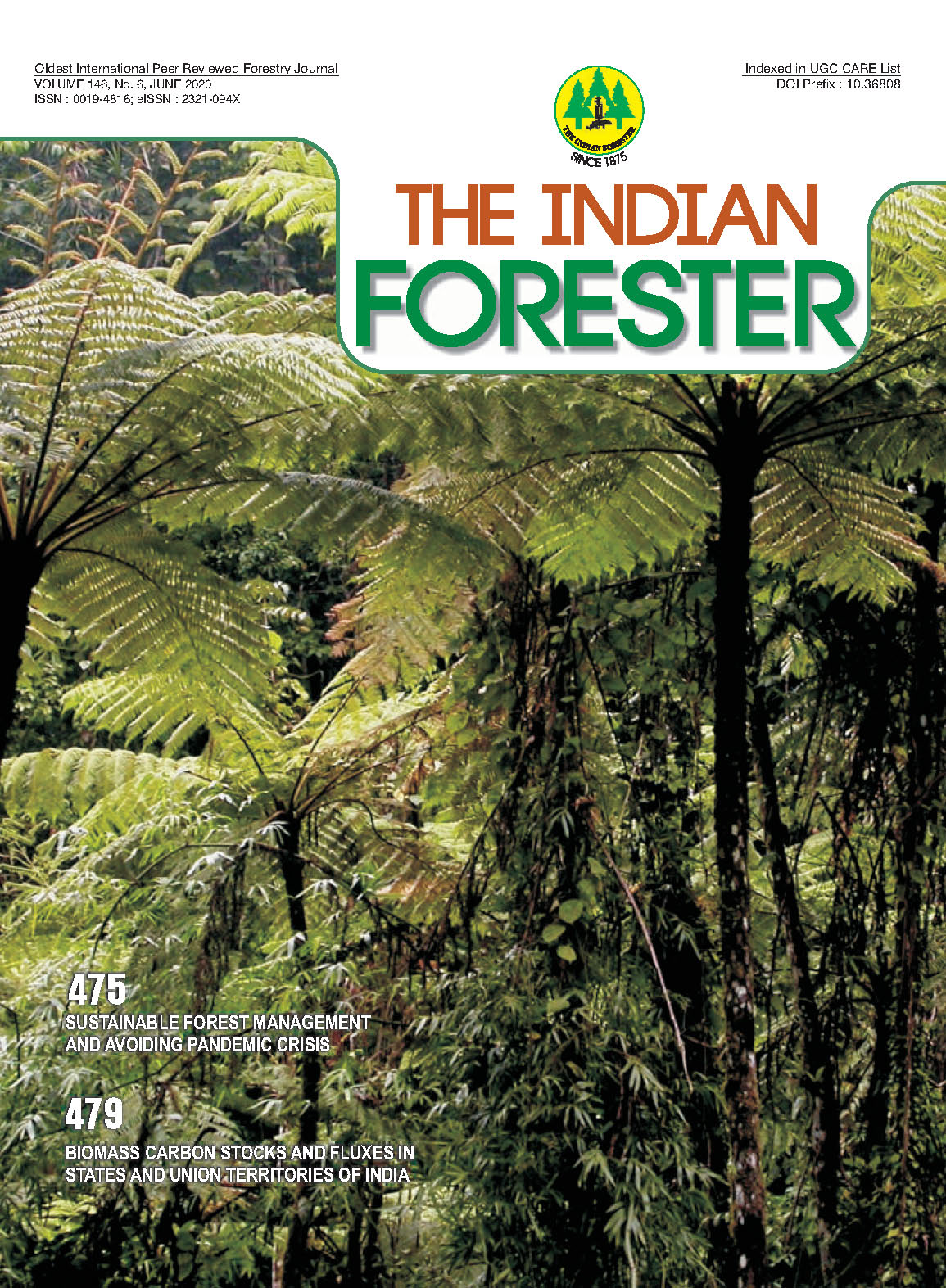Biodiversity of Lithophytes in Southern Western Ghats of Palaghat, Kerala, India
DOI:
https://doi.org/10.36808/if/2020/v146i6/146500Keywords:
Diversity, Lithophytes, Kozhinjampara, Southern Western Ghats, Kerala.Abstract
The present paper focuses on biodiversity of lithophytic plant species of Kozhinjampara situated in Southern Western Ghats of Palghat district, Kerala. A total number of 102 lithophytic species in 76 genera and 41 families were documented. The family Apocynaceae was most common followed by Amaranthaceae and Fabaceae. Among them epilithic habitats species is more dominant compared to cryptoendolithic, chasmoendolithic and hypolithic. Due to the fact that lithophytes are thrive in harsh environmental conditions which threaten their population. The present study may provide a baseline data for researchers to address the impact of climatic change in near future.References
Alves R. and Kolbeck J. (1993). Penumbral rock communities in Campo-Rupestresites in Brazil. Journal of Vegetation Science, 4: 357-366.
Aravindhan V. and Rajendran A. (2014). Diversity of invasive plant species in boluvampatti forest range, the southern Western Ghats, India. American-Eurasian Journal of Agricultural and Environmental Sciences, 14(8): 724-731.
Bashan Y., Li C.Y., Lebsky V.K., Moreno M. and De-Bashan L. E. (2002). Primary colonization of volcanic rocks by plants in arid Baja California, Mexico. Plant Biology, 4: 392-402.
Campbell S.E. (1982). Precambrian endoliths discovered. Nature, 299: 429-431.
Cockell C.S. and Lee P. (2002). The biology of impact craters A review. Biological Reviews, 77(3): 279-310.
FAO. (1990). Production Yearbook. FAO, Rome, Italy.
Gold W.G. and Bliss L.C. (1995). Water limitations and plant community development in a polar desert. Ecology, 76(5): 1558-1568.
Gamble J.S. (1915-1936). Flora of the Presidency of Madras, Vols. I-III. Adlard and Sons Ltd., London.
GrÓ§ger A. and Huber O. (2007). Rock outcrop habitats in the Venezuelan Guayana low lands: their main vegetation types and floristic components. Brazilian Journal of Botany, 30(4): 599-609.
Jayanthi P., Rajendran A., Binu T., Aravindhan V. and Sivalingam R. (2011). Biodiversity of Lithophytes in Madukkarai Hills of Southern Western Ghats of Coimbatore district, Tamil Nadu, India. International Journal of Biological Technology, 2(2): 76-82.
Lopez B.R., Bashan Y. and Bacilio M. (2009). Rock colonization plants: abundance of the endemic cactus Mammillaria fraileana related to rock type in the southern Sonoran Desert. Plant Ecology, 201(2): 575-588.
Matthew K.M. (1981). Flora of the Tamil Nadu Carnatic.
Muthuraja R., Muthukumar T., Sathiyadash K., Uma E. and Priyadharsini P. (2014). Arbuscular mycorrhizal and dark septate endophyte fungal association in lycophytes and ferns of Kolli Hills, Eastern Ghats, Southern India. American Fern Journal, 104(2): 67-102. http://doi.org/10.1640/0002-8444-104.2.67.
Nair N.C., Henry A.N., Kumari G.R. and Chithra V. (1983). Flora of Tamil Nadu, India. Coimbatore: Botanical Survey of India, Southern Circle, Vol. I.
Reddy C.S. (2008). Catalogue of invasive alien flora of India. Life Science Journal, 5(2): 84-89.
Sterflinger K. and Krumbein W.E. (1997). Dematiaceous fungi as a major agent for biopitting on Mediterranean marbles and limestones. Geomicrobiology journal, 14(3): 219-230.
Tozer W.C., Hackell D., Miers D.B. and Silvester W. B. (2005). Extreme isotopic depletion of nitrogen in New Zealand lithophytes and epiphytes the result of diffusive uptake of atmospherics ammonia. Oecologia, 144(4): 628-635. http://doi.org/10.1007/s00442-005-0098-0.
Westall F. and Folk R.L. (2003). Exogenous carbonaceous microstructures in Early Archaean cherts and BIFs from the Isua Greenstone Belt: Implications for the search for life in ancient rocks. Precambrian Research, 126 (3-4): 313-330.
Wierzchos J., Ascaso C., Sancho L.G. and Green A. (2003). Iron-rich diagenetic minerals are biomarkers of microbial activity in Antarctic rocks. Geomicrobiology Journal, 20: 15-24.
Zwieniecki M.A. and Newton M. (1995). Roots growing in rock fissures: their morphological adaptation. Plant and Soil, 172: 181-187.
Downloads
Downloads
Published
How to Cite
Issue
Section
License
Unless otherwise stated, copyright or similar rights in all materials presented on the site, including graphical images, are owned by Indian Forester.





